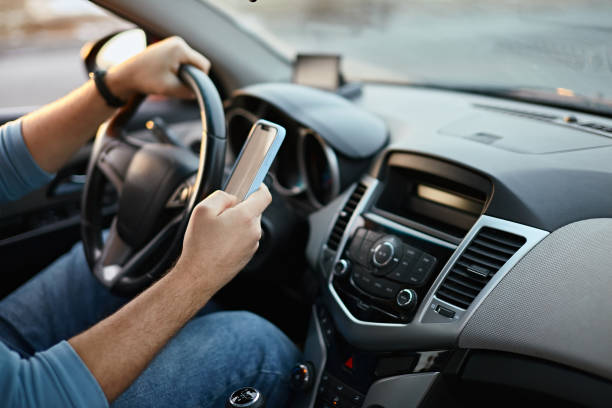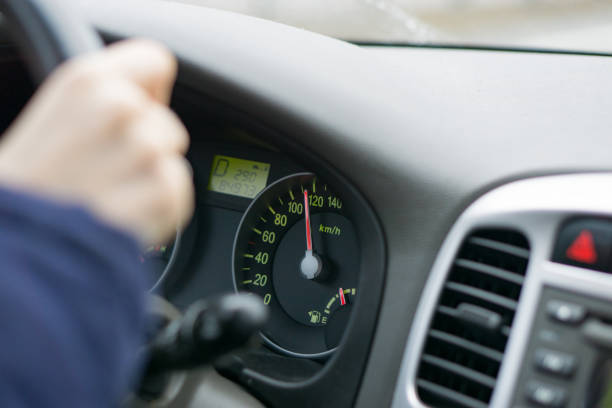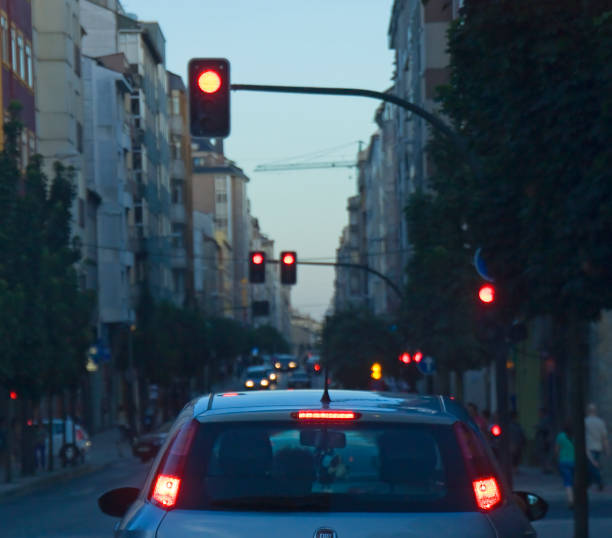
Negligence refers to irresponsible behavior resulting in harm to another individual. In car accident scenarios, a person can be negligent in various ways.
Here are some of the most common examples:
Driving in bad weather
During a heavy rainstorm, the roads are slippery and you can hardly see the road in front of you. The weather might be out of anyone’s control but there are things you can do such as driving slowly or making sure you’re using the correct set of tires.
Drunk driving
Driving under the influence of alcohol or drugs is negligent and irresponsible. Being intoxicated severely impairs a person’s ability to operate their vehicle safely.
Road rage
Even if someone else provokes you on the road, responding with reckless behavior is considered negligent as it can lead to serious accidents.

Ignoring traffic signals
Ignoring traffic signals like stop signs or red lights may cause you to crash with another vehicle or even hit a pedestrian.
Driving when fatigued
Driving while excessively tired has serious effects on a driver’s attention, decision-making, judgment, coordination and reaction time.
Texting while driving
Sending a text while driving might seem harmless but even a few seconds of distraction can be very risky. According to the NHTSA, texting will take your eyes off the road for at least 5 seconds and a lot of things can happen within that timeframe.
Neglecting vehicle maintenance
Every driver has a duty to keep their vehicle in good working condition. Ignoring maintenance issues like replacing your brake pads can lead to accidents.
The Difference Between an Accident and Negligence
Accidents are a common occurrence on the roads. You could be sitting at a red light and still get hit. Most accidents are not intentional. However, there are also a lot of accidents that occur as a result of someone’s negligence and in the eyes of the law, a negligent party needs to be held accountable for the consequences of their actions.

But is it possible for a car crash to truly be an “accident” where no one is negligent? While rare, it does happen.
Let’s take for example two drivers on a freeway, both traveling at the speed limit with an empty lane between them.
But then both drivers signal a lane change, check their mirrors, glance over their shoulders, and move into the empty lane at the same time.
They collide because neither saw the other.
In this scenario, it’s unclear if either driver was negligent or failed to exercise reasonable care. Some might argue that this was a genuine accident where no one was at fault.
However, such situations are the exception rather than the rule. In most cases, accidents occur because of someone’s negligence and thus identifying and proving negligence is crucial in determining liability and seeking compensation for damages.
Your Legal Duties as a Driver
As a driver, you are required by the law to exercise reasonable care on the road so as not to harm anyone. Some of the crucial things you need to do include:
- Driving at a reasonable speed or within the speed limit.
- Be on the lookout for other vehicles, pedestrians and hazards on the road.
- It’s also your duty to be familiar of traffic regulations and follow them.
- Moreover, you’re required to keep your vehicle under control.
- You should also see to it that your vehicle is kept in a safe working order. Brakes and lights should be working properly.
How to Prove a Driver’s Negligence
If you’re a victim of a car accident, you need to be able to prove the other party’s negligence so that you can build your case and file a claim for damages.
As previously mentioned, the law requires drivers to use reasonable care / caution on the road. This means that if you want to prove negligence on their part, you need to prove that they violated or breached their duty of care.
If their behavior fell short of how a person would have reasonably acted if placed under the same circumstances, then that is considered breaching in the part of the defendant and as a result, you have suffered injuries and damages to your vehicle.

Showing that someone was negligent means providing strong evidence that clearly proves they were at fault. Among the things you should gather include:
- Police reports
- Photographs of the scene
- Video surveillance / dash cam recordings
- Witness statements
- Your testimony
- Medical records and bills
- Vehicle damage reports
Vehicle repair estimates - Proof of missed work / lost income
4 Elements of Negligence
Proving negligence in a car accident case involves demonstrating four key elements, each of which plays a crucial role in determining the other party’s liability and your potential compensation:
Duty
Duty establishes that the defendant (at-fault driver) had a responsibility to act reasonably and avoid causing harm to others. In the context of driving, every motorist has a duty to operate their vehicle safely and follow traffic laws.
Breach
This breach of duty could involve violating traffic laws, such as speeding, running a red light, or failing to yield. Or it could also be failing to exercise reasonable care under the circumstances, such as driving while intoxicated or even driving while distracted.
Causation
You need to establish that the harm you suffered was a direct result of their breach of duty. Basically, you have to demonstrate that the car accident caused your injuries, rather than them being attributable to some pre-existing condition or unrelated event.
Damages
When it comes to damages, the main focus would be physical injuries. These injuries are tangible and can be measured in terms of medical bills, lost wages, and property damage. However, it’s important to note that physical injuries often lead to intangible harm as well, such as:
Loss of consortium (loss of companionship or support from a spouse)
Pain and suffering
Loss of enjoyment in life
Emotional distress

Proving negligence in a car accident case can be complex and challenging. Work with a seasoned lawyer who can present a number of evidence to demonstrate that the at-fault driver’s actions were indeed negligent.